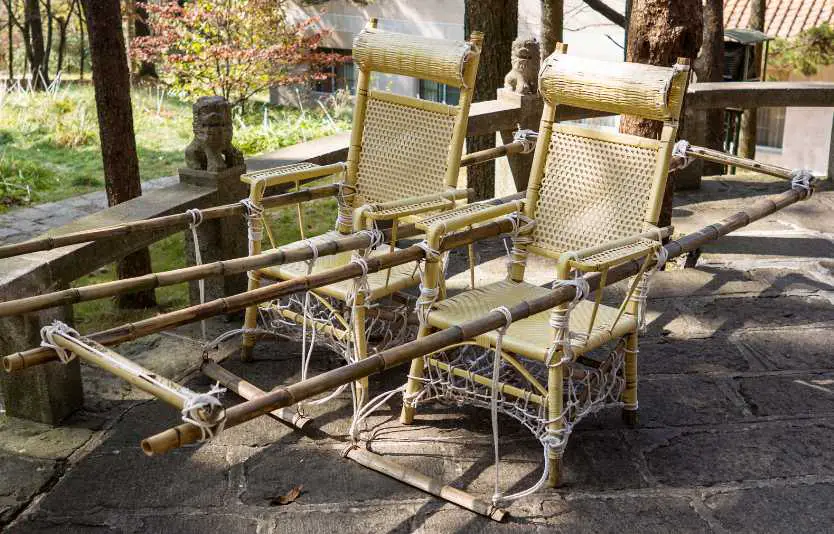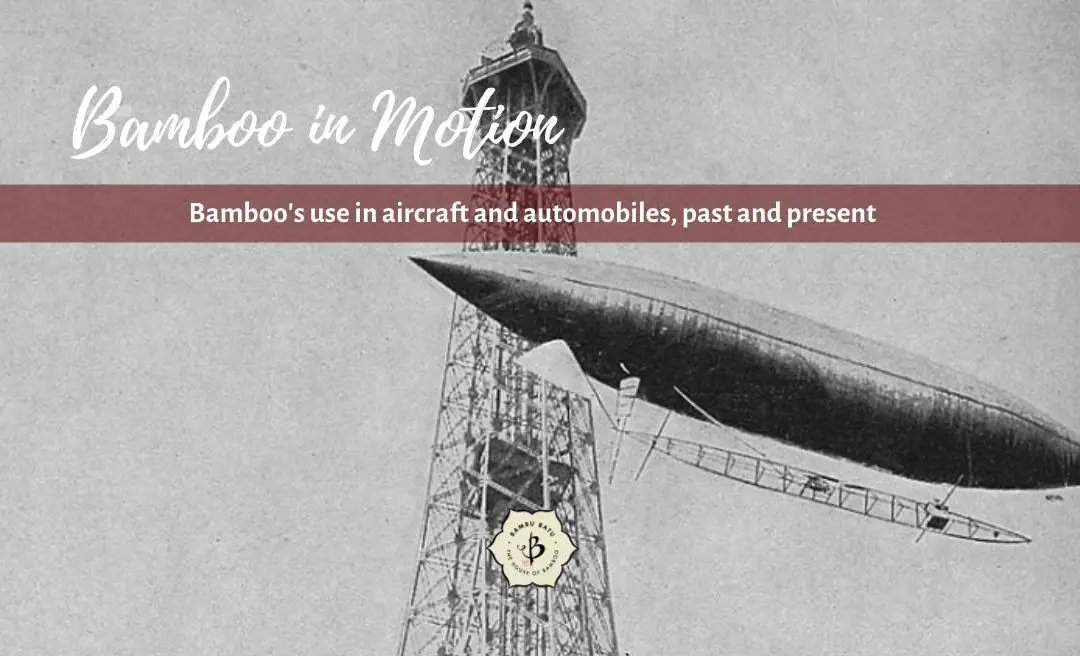NOTE: This article about bamboo cars first appeared in 2008. The story was revised in 2021.
Is there anything bamboo cannot do? Perhaps, but as Fred Hornaday likes to say: “If it can’t be done with bamboo, it probably shouldn’t be done.” There’s a lot to chuckle about in the following article about bamboo automobiles and aircraft, but the usefulness of bamboo is seriously impressive.
Today bamboo is being used as a structural building material, sometimes replacing concrete and steel. Car manufacturers are also finding ways to incorporate bamboo into their designs. From the earliest aircraft to modern luxury cars and fuel sources, bamboo is everywhere in construction and transportation.
Philippines introduces the Bamboo Mobile
As American car manufacturers race to produce a hybrid Cadillac Escalade that gets 20 mpg (no, I’m afraid I’m not kidding here), the Filipino Department of Transportation (DOTr) is already light years ahead, with the incredible bamboo mobile. Chiefs of state cruise around the capital city of Manila in this stylish station wagon, conducting official business and making ceremonial appearances.

Eat your heart out Fred Flintstone! Statistics on the vehicle’s fuel economy have not been made available. But check out that adjustable windshield, for increased aerodynamics, and better fuel economy.
If you’d like to zip around town on some bamboo transportation, but you’re not sure if this phenomenon from the Philippines is up to the task, then I heartily recommend you look into getting yourself a bamboo bicycle. Check out this article on some of the best bamboo bicycles currently available.
Bamboo transportation
The historical uses of bamboo in the Far East transcend nearly all aspects of culture and society. For at least a couple of thousand years, people in Asia and the Pacific Islands have been using bamboo for furniture, musical instruments, tools (see below), weapons, housing, and more. Bamboo transportation, however, seems to be a more recent development.

It’s unlikely to see this mode of bamboo technology going mainstream or replacing the legions of steel and fiberglass that congest our highways today. But if you had a chance to tour Bali or Chang Mai in one of these rigs, how could you resist?
Bamboo in cars and aircraft
Just as bamboo building materials are growing increasingly common in the construction industry, especially with the new improved techniques for engineered bamboo, it’s also making its way into cars and airplanes.
Moso Bamboo, a brand of engineered bamboo products, has been supplying Lexus with bamboo material for some of its interior paneling. And BMW is working in partnership with ReNuTeq to construct electric vehicle recharging stations in Germany, made from structurally engineered bamboo (SEB).
Also, check out this story about Toyota’s bamboo concept car.
And did you know that some of the very first airplanes and dirigibles were designed with bamboo? That’s because of bamboo’s excellent strength-to-weight ratio. The first aircraft, back in the late 1800s, had a heck of a time just getting off the ground, so it was essential to reduce the weight of materials to an absolute minimum. (See the featured image at the top of the article.)
Alberto Santos Dumont, the Brazilian aeronautical pioneer, had the bright idea to replace heavy wood with bamboo and heavy rope with thin wire. And soon he was literally sky-high. Check out the documentary film, Wings of Madness, to learn more about the amazing and tragic life of this genius engineer, inventor and showman.
Bamboo for fuel
These days, bamboo materials are more of an aesthetic novelty than a vital engineering component for modern cars and planes. However, the promise of green ethanol fuel made from renewable bamboo is looking better by the minute.
Vegetable-based ethanol has already entered the mainstream, but so far, most of this ethyl alcohol is coming from food crops like corn and wheat. These grains are high and sugar and therefore easier to ferment and convert into ethanol fuel.
But running cars on food crops has the unfortunate side effect of driving up food prices. Therefore, it makes greater sense to source ethanol from non-food crops like hemp or bamboo. And bamboo, as a perennial grass, renews itself quickly after every harvest.
Thankfully, new methods and technologies are now making it easier to convert woody crops like trees and bamboo into ethanol. (Of course, bamboo is far more renewable than trees, one of the reasons we love it so much.) The newer process, called cellulosic ethanol, uses enzymes to break the long cellulose molecules into simpler sugars. From there, it’s a relatively simple matter of fermentation to produce ethanol.
Check out these detailed stories on Ethical Ethanol and Exciting Enzymes to learn more.
Bamboo and tools in the archaeological record
Earlier we mentioned bamboo’s use for early tools. There’s actually an interesting controversy about the absence of stone tools in the archaeological records of the Far East. Historians long believed that these cultured had been slow to discover, develop and adopt the use of tools.
More recently, however, many archaeologists have come around to the idea that these earlier societies were using bamboo tools, which were easier to fashion, but biodegrade quickly in the elements. We know that some of the earliest weapons and paper were made from bamboo, so it’s hard to imagine they hadn’t also developed some useful bamboo knives, chisels, and pullies.
Keep on rolling
Check out some of these other popular articles to learn more about bamboo and its incredible potential for construction, transportation, and a greener future.
- The benefits of bamboo
- Bamboo and carbon sequestration
- Growing bamboo for erosion control
- 9 Reasons why bamboo is a more sustainable alternative
FEATURED IMAGE: Albert Santo-Dumont circles the Eiffel Tower in an airship made partly from bamboo on July 13, 1901. (Wikipedia)

























